Large edible mushrooms have been a culinary delight for centuries, captivating chefs and food enthusiasts alike with their unique flavors and textures. These magnificent fungi not only add depth to dishes but also offer numerous benefits.
From the earthy taste of portobello mushrooms to the delicate sweetness of King Oyster mushrooms, these giant fungi are gaining popularity in kitchens around the world.
As more people explore plant-based diets or seek alternative sources of protein, large edible mushrooms have emerged as a versatile ingredient that can be used in various cuisines and cooking styles. In this article, we will delve into the fascinating world of large edible mushrooms, exploring their diverse types, nutritional value, and creative ways to incorporate them into your meals.
List of Large Edible Mushrooms
1. Giant puffball
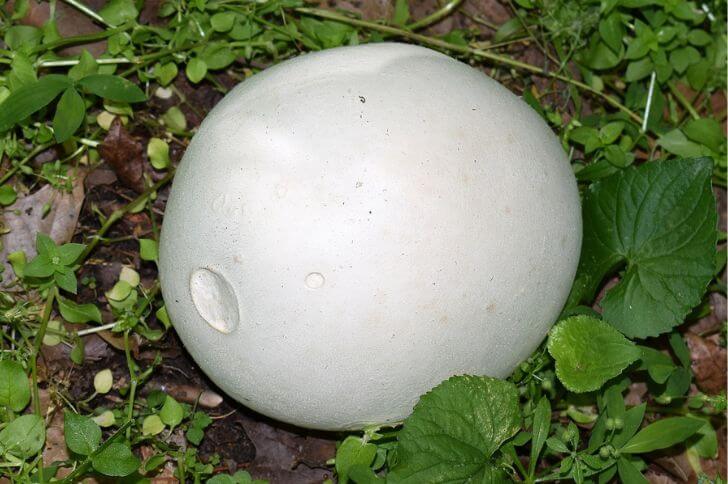
Giant puffball mushrooms, also known as Calvatia gigantea, are truly a sight to behold. These massive fungi can grow up to three feet in diameter and weigh several pounds! Their round shape and white exterior make them easily identifiable from a distance.
But what makes the giant puffball mushroom unique is its edible nature. It has a delicate flavor that some describe as resembling tofu or mild cheese. This makes it a popular choice.
When harvesting giant puffballs, timing is crucial. They should be collected before they reach maturity because once they do, their interior will transform into dark spores that render them inedible.
To enjoy these colossal mushroom wonders, they can be sliced up and sautéed with butter or used in various recipes such as soups, stews, or even stuffed with flavorful fillings like cheese or herbs.
Overall, the giant puffball mushroom presents both visual amazement and culinary potential. Its immense size combined with its edible qualities has made it a fascinating subject for nature enthusiasts while also satisfying the taste buds of those who dare to explore this unusual delicacy from the fungal kingdom.
2. Oyster mushrooms
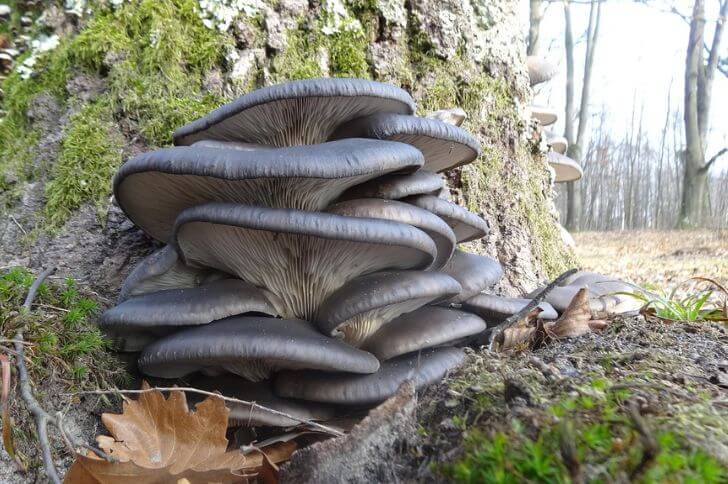
Oyster mushrooms, scientifically known as Pleurotus ostreatus, are a popular choice among mushroom enthusiasts and culinary experts alike.
These large edible fungi belong to the Pleurotaceae family and have a unique appearance resembling oysters or shelves growing on trees. Oyster mushrooms are widely cultivated for their rich flavors and numerous benefits.
One of the key features that make oyster mushrooms so sought after is their versatility in cooking.
With a delicate and mild flavor, they can be incorporated into various dishes, adding a subtle earthy taste. These mushrooms that you can eat also possess a distinct texture that is both tender and meaty when cooked properly, making them an excellent substitute for meat in vegetarian or vegan recipes.
Besides their culinary appeal, oyster mushrooms are low in calories and fat while being an excellent source of protein, fiber, vitamins (such as vitamin D), and minerals like potassium and iron.
Whether sautéed, added to stir-fries or soups, or used as an alternative protein source in various recipes – these large edible fungi bring both gastronomic delight and potential therapeutic value to our plates.
3. Dryads mushroom
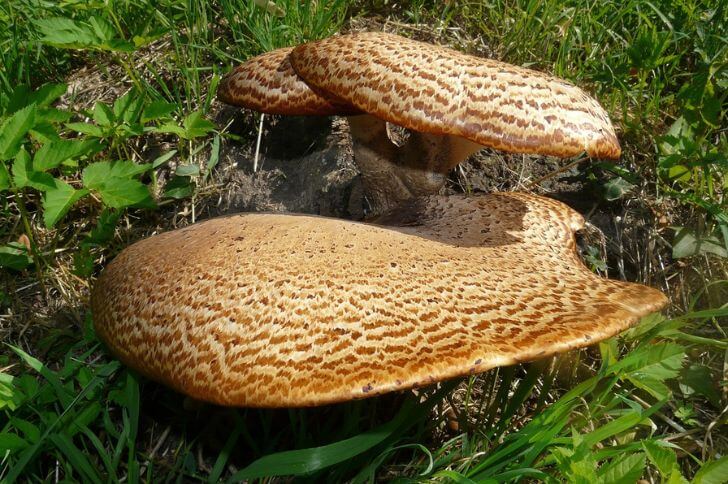
Dryads mushroom is a species that stands out not only for its impressive size but also for its delicious taste. These large edible mushrooms can reach up to 12 inches in diameter, making them a true delight for mushroom enthusiasts and culinary experts alike.
The dryad mushroom boasts a distinctive cap that is brownish with dark scales, while its flesh is firm and succulent.
When it comes to flavor and texture, the dryad mushroom does not disappoint. Its meaty consistency allows it to hold up well during cooking, making it perfect for various culinary applications.
Whether sautéed or used in soups and stews, this mushroom adds an earthy richness and depth of flavor that elevates any dish.
4. Lion’s mane
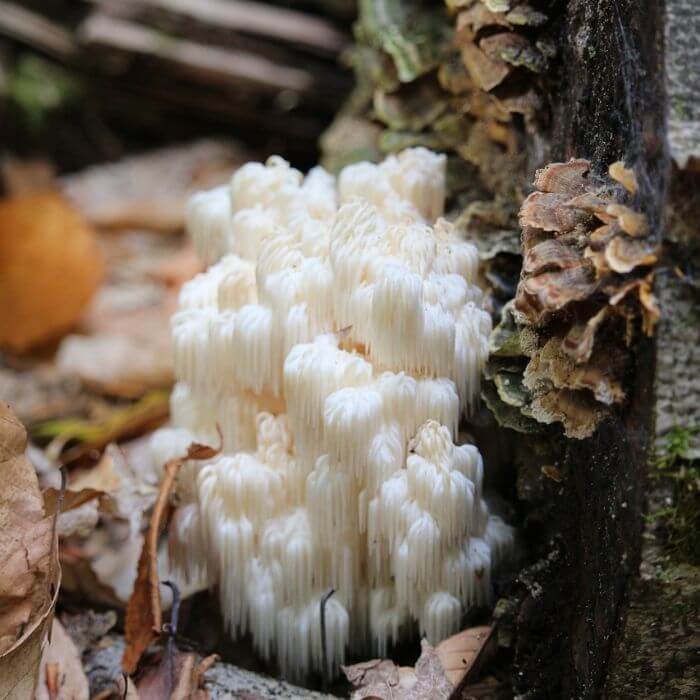
Lion’s Mane is a fascinating and unique species of large edible mushrooms. Known scientifically as Hericium erinaceus, it gets its name from the long cascading tendrils that resemble a lion’s mane.
This distinctive appearance makes it easily recognizable in the wild, making for an exciting find for mushroom foragers.
Lion’s Mane Recipe:
Ingredients:
-Lion’s mane mushrooms
– Olive oil
– Salt
– Pepper
– Garlic powder
Instructions:
- Preheat the oven to 400°F (200°C).
- Slice the lion’s mane mushrooms into thick slices.
- Toss the mushroom slices with olive oil, salt, pepper, and garlic powder in a bowl.
- Arrange the seasoned mushroom slices on a baking sheet.
- Bake for 15 mins
- Serve hot as a side dish or use them in your favorite recipes. Enjoy!
5. Beefsteak mushroom
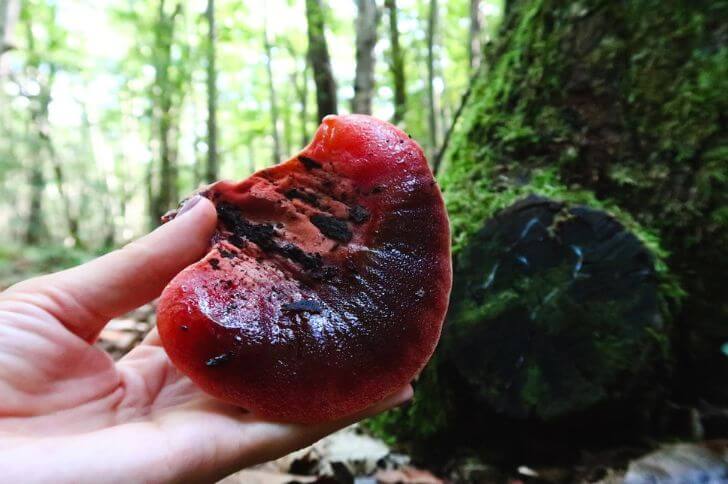
Beefsteak mushrooms, also known as Fistulina hepatica, are a type of large edible mushroom that can be found growing on trees in forests.
These mushrooms have a distinct appearance with their vibrant red color and fleshy texture, resembling a slab of beef. They are often referred to as beefsteak due to their meaty taste and texture when cooked.
One unique characteristic of beefsteak mushrooms is that they are parasitic in nature. They typically infect wounded or dying trees, causing the wood to rot and decay
. As they grow, these edible mushrooms release enzymes that break down the lignin present in the wood, contributing to the decomposition process.
In terms of culinary uses, beefsteak mushrooms offer a rich flavor profile that is often described as earthy and slightly tangy.
They can be cooked in various ways such as grilling, sautéing, or roasting. Due to their robust texture, these mushrooms work well as a meat substitute in vegetarian dishes or can be incorporated into hearty stews and stir-fries for added depth of flavor.
With its striking appearance and delicious taste, the beefsteak mushroom has gained popularity among both chefs and foragers alike.
6. Porcini mushrooms
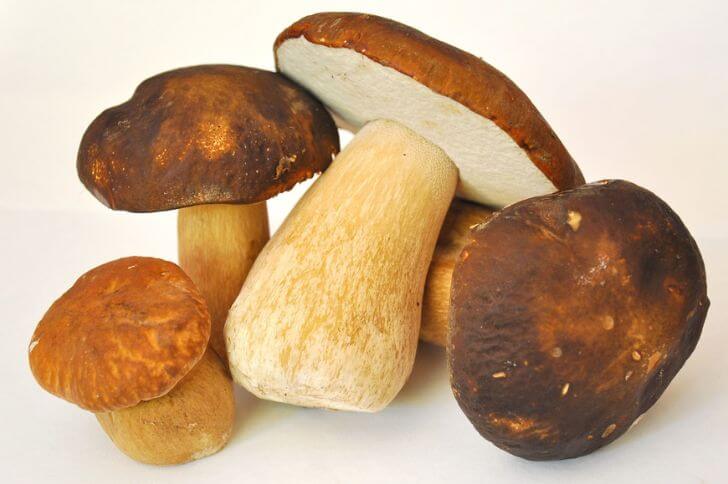
Porcini mushrooms, also known as Boletus edulis, are large edible mushrooms highly sought after by culinary enthusiasts around the world.
These flavorful fungi have a distinct nutty and earthy taste that adds depth to various dishes. They are commonly found in coniferous and deciduous forests, especially in Europe, North America, and Asia.
One of the key characteristics of porcini mushrooms is their impressive size. They can grow up to 12 inches tall with caps that reach diameters of 8 inches or more.
The color of these edible mushrooms varies from light brown to dark brown, depending on their maturity. Their thick stems provide stability while their broad caps offer a substantial amount of flesh, making them ideal for cooking.
Chefs and home cooks alike appreciate porcini mushrooms for their versatility in the kitchen. Due to their robust flavor profile, they pair exceptionally well with rich meat dishes like steaks or roasts.
They can be sautéed with butter and garlic to enhance pasta sauces or used as a topping for pizzas and bruschetta. Additionally, drying porcini mushrooms intensifies their flavor, allowing them to be enjoyed even during seasons when fresh ones are not available.
Overall, porcini mushrooms stand out among other large edible fungi due to their unmistakable taste and size.
Whether incorporated into traditional recipes or used creatively in modern cuisine, these delectable mushrooms add an extra layer of complexity that elevates any dish they grace.
7. Termitomyces Titanicus
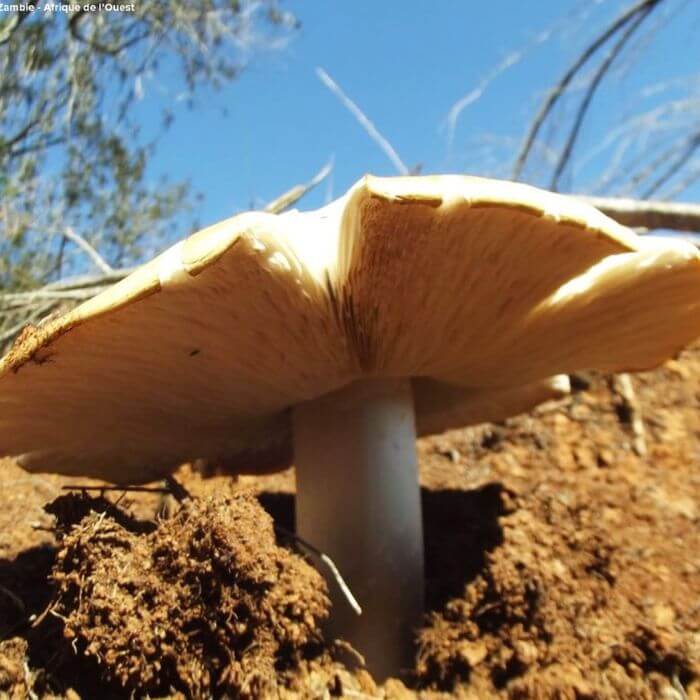
source:futura.sciences
Termitomyces Titanicus, also known as the Giant Termitomyces, is a species of large edible mushrooms that can be found in various regions across Africa.
These edible mushrooms have gained significant attention due to their impressive size and unique ecological relationship with termites. They are known to grow exclusively in termite mounds, forming a symbiotic partnership with the termites.
The Termitomyces Titanicus mushrooms are truly remarkable in terms of their size and weight. They can reach heights of up to 30 centimeters (12 inches) and weigh several pounds.
This makes them one of the largest species of edible mushrooms in the world. Their cap is usually cream or brown in color and has a distinctive pattern that sets them apart from other mushroom varieties.
These giant mushrooms owe their existence to a fascinating mutualistic association with termites. The termites construct vast underground networks within their mounds, creating an ideal environment for the growth of these fungi.
The Termitomyces Titanicus mycelium spreads throughout the termite mound, breaking down organic matter and recycling nutrients for both itself and the host termites. In return, the fungus provides food for the termites by producing nutritious fruiting bodies above ground, which they cultivate and consume as part of their diet.
8. Chicken of the woods
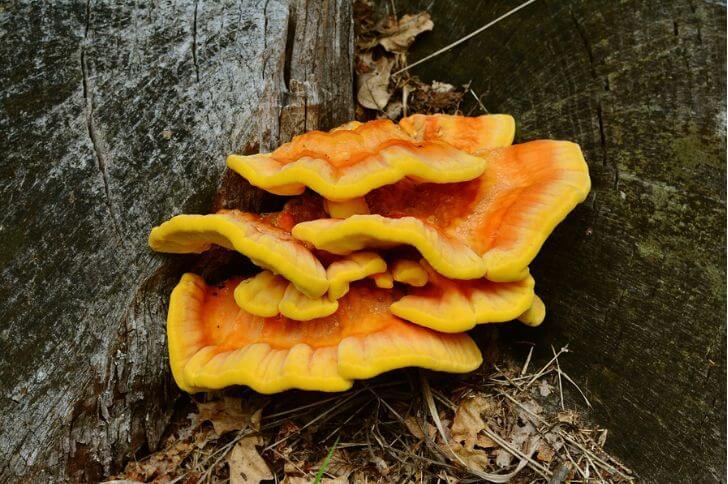
Chicken of the woods, scientifically known as Laetiporus, is a genus of large edible mushrooms that are widely sought after by foragers and mushroom enthusiasts.
These remarkable fungi are known for their vibrant colors and unique texture, which resembles poultry meat – hence the name Chicken of the woods. They typically grow in shelf-like clusters on trees, stumps, or logs and can range in size from small to enormous.
One distinctive feature of Chicken of the woods is their bright orange to yellowish-orange caps that often fade towards the edges.
The upper surface is smooth and velvety when young, but it becomes more wrinkled with age. The flesh is succulent and tender when cooked correctly, making it a popular choice for vegetarian dishes or as a substitute for chicken in recipes.
9. Maitake
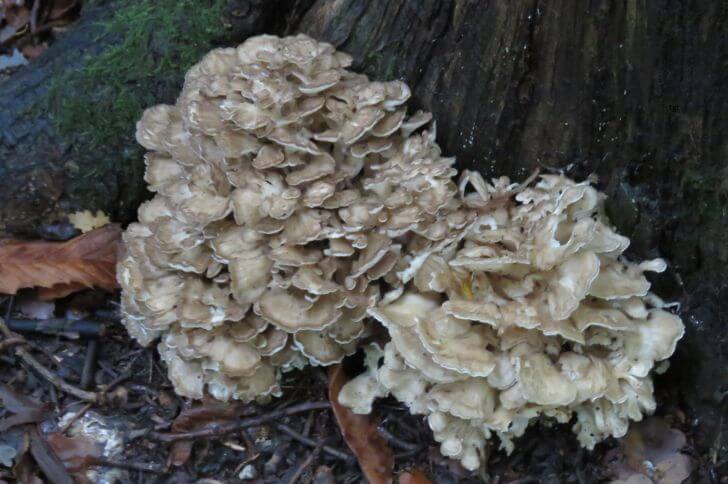
Maitake is a large edible mushroom that holds great significance in Japanese cuisine. Its unique name comes from the fact that its frond-like clusters resemble dancing butterflies or feathered wings.
Maitake mushrooms are typically found growing at the base of oak trees and have a distinct earthy aroma.
These mushrooms are highly sought after for their rich flavor and meaty texture, making them a popular ingredient in various dishes.
When cooked, maitake mushrooms develop a deep umami taste and can be used in stir-fries, soups, pasta dishes, or even grilled as a standalone side dish. Apart from their culinary uses, maitake mushrooms are also valued for their potential health benefits.
Overall, maitake stands out not only due to its impressive size but also because of its versatility in the kitchen and potential health benefits it offers.
10. Field mushroom
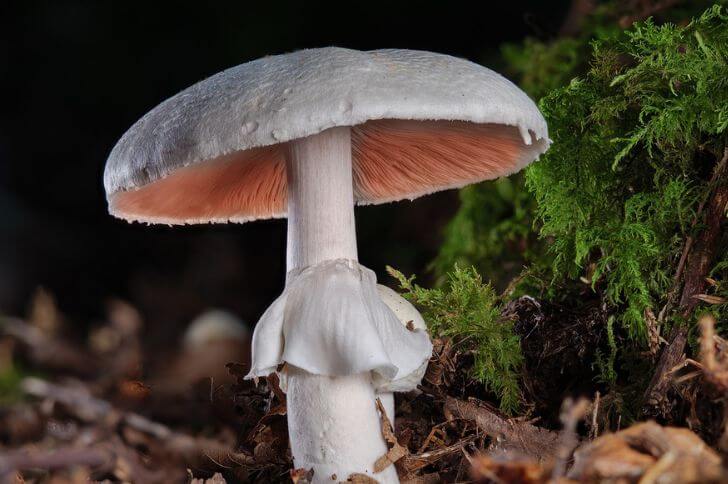
Field mushrooms are a type of large edible mushrooms that can be found in various grassy areas, such as fields, meadows, and pastures.
They belong to the Agaricus genus and are known for their distinct appearance and delicious flavor. These mushrooms typically have a white or cream-colored cap with a slightly rounded shape and a firm texture.
The cap can grow up to 10 centimeters in diameter and may become more flat as it matures.
One distinguishing feature of field mushrooms is their gills, which are located underneath the cap. When young, these gills are pinkish in color but gradually turn dark brown as the mushroom ages. Field mushrooms also have a thick stem that is usually white or off-white in color.
Field mushrooms have been enjoyed for centuries due to their rich flavor and versatility in cooking.
They possess an earthy aroma that intensifies when cooked, making them ideal for adding depth to various dishes such as soups, stews, stir-fries, omelets, or even grilled on their own.
Their robust taste pairs well with ingredients like garlic, herbs (such as thyme or parsley), cheese (like mozzarella or parmesan), or meats like chicken or steak.
11. Lobster mushrooms
Lobster mushrooms are a unique and flavorful variety of large edible mushrooms that have gained popularity in recent years. What sets them apart from other mushrooms is their vibrant reddish-orange color, which resembles the shell of a cooked lobster.
Despite its name, the lobster mushroom is not actually a mushroom species on its own but rather a result of an interesting parasitic relationship between two different fungi.
The lobsters are formed when the parasitic fungus Hypomyces lactifluorum attacks and engulfs another mushroom species, typically either russula or lactarius.
As it takes over the host mushroom, the parasitic fungus changes its appearance, texture, and flavor completely. The resulting lobster mushroom has a firm and meaty texture with a subtly sweet taste that is often compared to seafood flavors like crab or lobster.
These fascinating mushrooms are highly sought after by chefs and foragers alike due to their delicious flavor profile as well as their visually appealing appearance.
They can be used in various culinary applications such as soups, stews, pasta dishes, or even grilled as a standalone dish.
12. Hedgehog mushroom
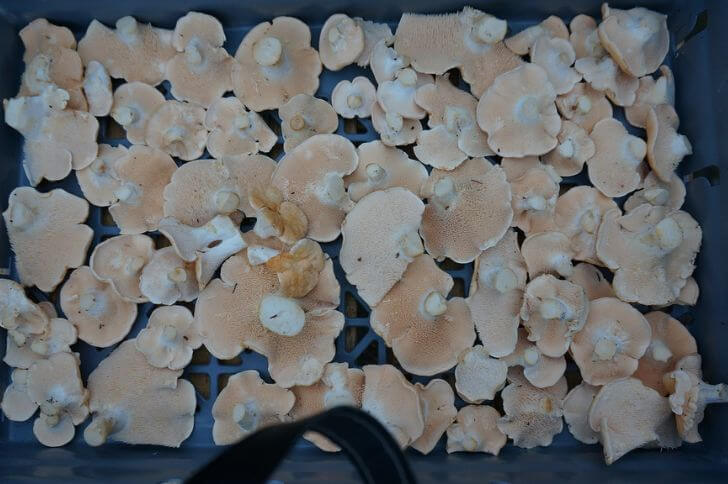
The hedgehog mushroom, scientifically known as Hydnum repandum, is a popular choice among foragers and chefs alike.
These large edible mushrooms are characterized by their distinct appearance, with a convex cap and spines instead of gills underneath. The cap can range in color from pale yellow to orange-brown, while the spines are typically white or cream-colored.
One of the key features that sets hedgehog mushrooms apart is their unique flavor profile. They have a delicate and nutty taste that is often compared to chanterelles, making them an excellent addition to various culinary dishes.
Hedgehog mushrooms are versatile in the kitchen and can be used in many recipes such as risottos, pasta dishes, soups, or simply sautéed with butter and herbs.
When it comes to foraging hedgehog mushrooms, they are commonly found in deciduous forests during the late summer and autumn months.
Their preference for growing near certain types of trees like oaks or beeches makes them relatively easy to identify once you know what to look for.
Final Thoughts:
In conclusion, large edible mushrooms offer not only a unique culinary experience but also a range of benefits. From their rich umami flavor to their high nutritional content, these fungi are a versatile ingredient that can be incorporated into various dishes.
Whether you’re sautéing them as a side dish or using them as the main ingredient in a hearty mushroom risotto, these large edible mushrooms are sure to elevate any meal. So why not explore the world of mushrooms and discover the incredible flavors and textures they have to offer?
Embrace the opportunity to try new recipes and experiment with different types of fungi. Your taste buds and your body will thank you for it!
sources:
Hi There,
My name is Jenny. I’m the Chief Editor at Try Green Recipes and besides making yummy and healthy foods for my kids, grandkids, and friends. I’m new to the blogging world but I believe what I have to share is unique and will bring joy to your home. If you are adventurous and want try something tasty, let’s get started.

